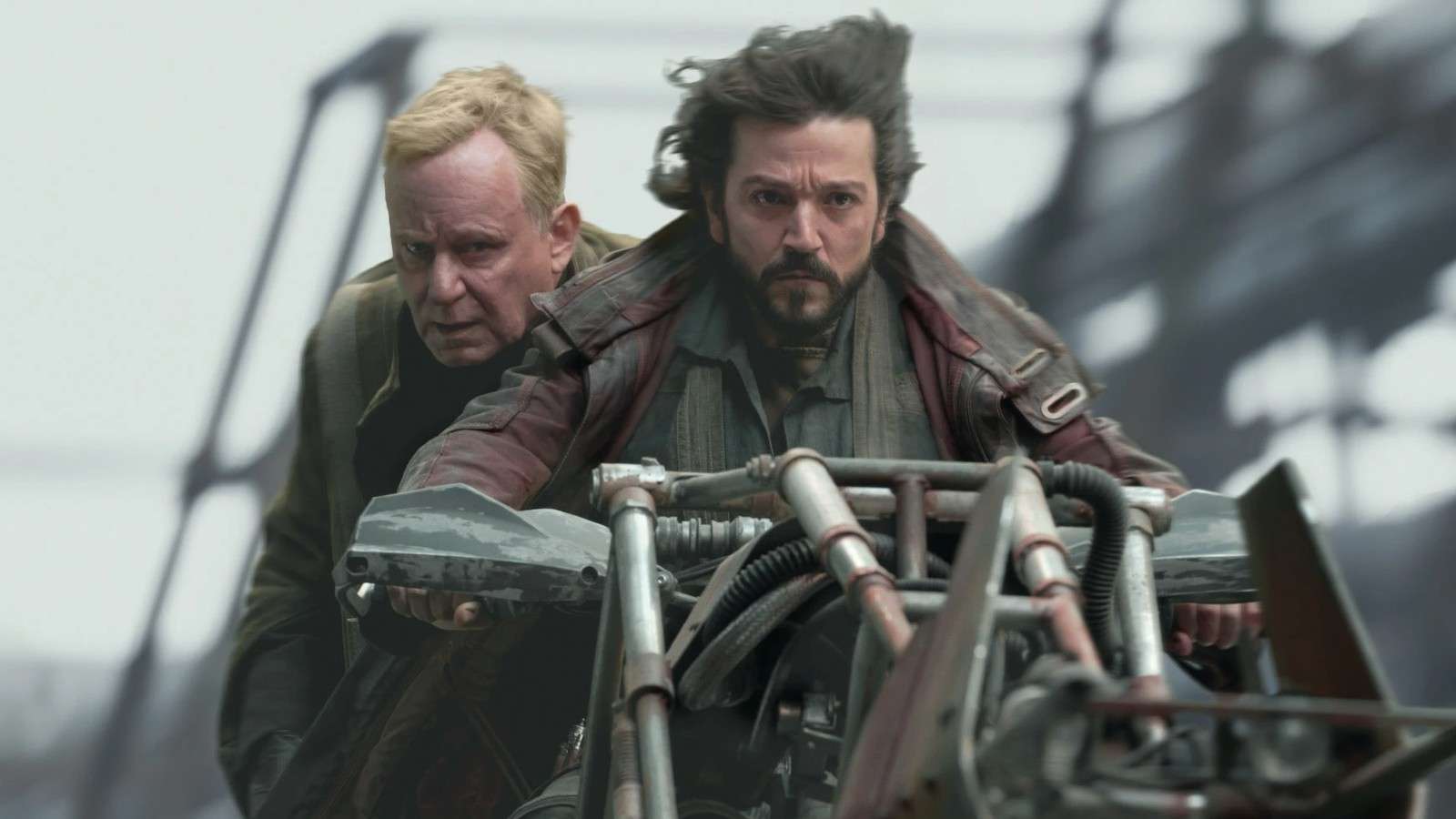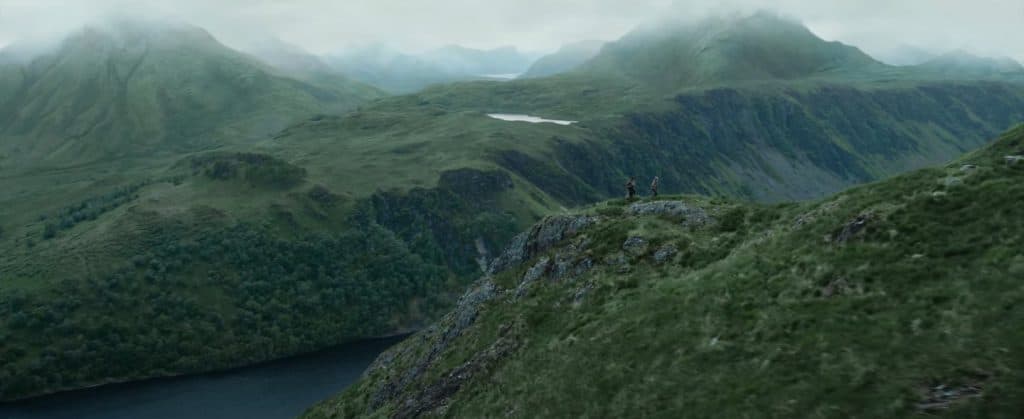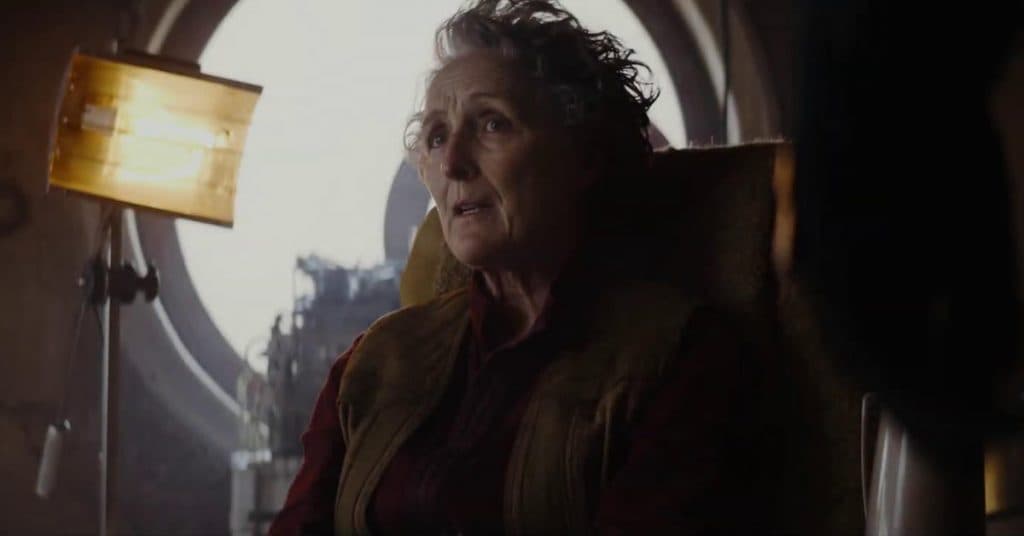Andor review: The most refreshing Star Wars since The Last Jedi
 Disney+
Disney+Andor is what a Star Wars revolution looks like; just as seal-clapping Easter Eggs and cameos were beginning to feel like the main directive, this has the audacity to strive for something more – actually being good.
Star Wars began its life as a source of joy. Four-and-a-half decades later, it’s slowly become the folly of the dreaded C-word: content, churned to meet the demand of finger-wagging fans who’d sooner legitimize fan-fiction than embolden a braver creative (cough cough, Rian Johnson).
Fan service isn’t inherently bad, but it should be calculated and impactful, rather than an essential component of a movie’s weaponry; take Rogue One’s ending, which boasts the best Darth Vader scene ever put to screen – and it’s ultimately just a cameo setting up what we already knew.
Andor, a prequel to the prequel, isn’t concerned with such oh-my-god-there’s-the-thing-I-like pleasures: much like The Last Jedi – though decidedly different in tone – this prioritizes grown-up storytelling and practical filmmaking over shallow thrills.
This spoiler-free review is based on the first four episodes of Andor Season 1.
Andor is a Star Wars prequel to a Star Wars prequel… and that’s okay
Space darkens the screen with sparkling stars, and a new dawn slides from underneath the title card. If the synth music immediately strikes your ears, Andor boasts one of the best composers in the biz: Nicholas Britell, of Succession and Moonlight fame.
We open in BBY 5 (before the Battle of Yavin), with Cassian Andor (Diego Luna) walking through an industrial space in Morlana One, a planet governed by a corporate authority during Age of the Empire. He looks for his sister in a brothel, attracts the ire of two policemen, and an altercation gets out of hand.
Soon, Cassian is on the run, but a life-changing figure lingers on the horizon: Luthen Rael (Stellan Skarsgård), a spymaster who sees his potential in the early days of the Rebel Alliance, with “pockets fermenting” under the Galactic Empire. “You’ll ultimately die fighting these bastards. Wouldn’t you rather give it all at once to something real?” he asks Andor.
Super-quick refresher: while beginning as a thief, Cassian Andor becomes the spy and captain seen in Rogue One who’s instrumental to helping the Rebels steal the Empire’s plans for the Death Star.
Yet, for a fate that’s preordained, each episode unfolds without the need to be referential. This is clearly a complete saga with its own roster of heroes, villains, and everyone else in the grey, and it has the confidence to tell its own story on its own terms.
Andor’s greatest strength is its practical, immersive sets
This isn’t a slight against The Volume, the massive LED soundstage used in The Mandalorian and Obi-Wan Kenobi, but Andor is quickly far more immersive than its predecessors without any strain.
Of course, visual effects are used throughout and frequently, but its intricate production design and on-location shooting make for a fuller vision, whether it’s a garage full of space fleet garbage or characters trekking up actual mountains, scored by the howls of TIE fighters under a miserable, overcast sky.
 Disney+
Disney+You don’t need to be a so-called cinephile to pick up the strokes of Blade Runner: in one sequence, Andor walks through a rainy, neon-lit space with futurism peeking through the grime; and the Imperial Security Bureau is similar to the Tyrell Building. Then there’s the title card, which nods to the greatest sci-fi film of them all: 2001: A Space Odyssey.
Script, direction, music, performances – Andor impresses on all fronts
Tony Gilroy serves as showrunner, with a handful of filmmakers helming episodes. The first three are directed by Toby Haynes – with three easily the strongest of the bunch – and the fourth is directed by Susanna White.
In each installment, there’s synergy in every element – most of all the cinematography, with Jonathan Freeman and Adriano Goldman casting a beautiful eye over every shot, whether it’s cloudy vistas, the dreamy outer glow of planets under spaceflight, or shakier, handheld action that rarely loses one’s sense of place in the fight.
The one major criticism is the humor, often feeling like it’s nervously shoehorned for some levity in otherwise grim proceedings – don’t be mistaken, for this is a dour brand of good-vs-evil and espionage, with furrowed brows, grumpy faces, and ignorant, po-faced fascists as its villains.
 Disney+
Disney+Fortunately, the performances are almost pitch-perfect; Luna manages to regress the hero we know he’ll become into someone altogether more cowardly and brutal, managing to tell more about himself in shifting eyes and a wavering voice than the words themselves. Meanwhile, Skarsgård initially appears one-note and rote, but his stern anger is soon revealed to be a consequence of maintaining a tiresome guise, and it makes him all the more commanding.
Others are worthy of praise, such as Genevieve O’Reilly returning as Mon Mothma, but Fiona Shaw is the standout in the first four episodes. We won’t go into too many details about her character, but she brings the frustrated, loving depth of someone real, while others’ motivations and personalities hew closer to archetypes we’ve long seen and understood.
The Verdict: Is Andor good?
Andor is one of the most exciting shows to emerge from the new era of Star Wars; emotionally maturer, compelling without quick fixes, and for the first time since The Last Jedi, we’re enriching the canon.
Andor Episodes 1-3 will be available to stream on Disney+ on Wednesday, September 21. You can sign up to Disney+ here.